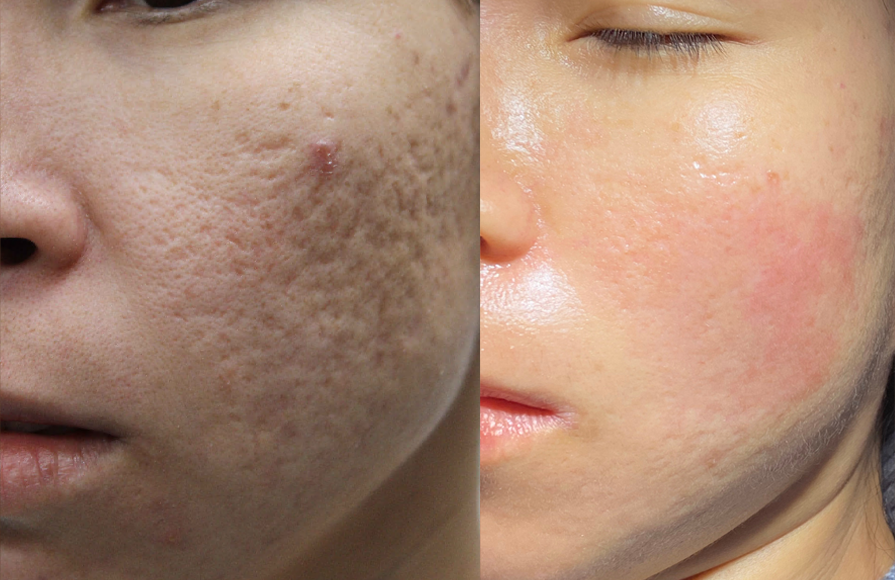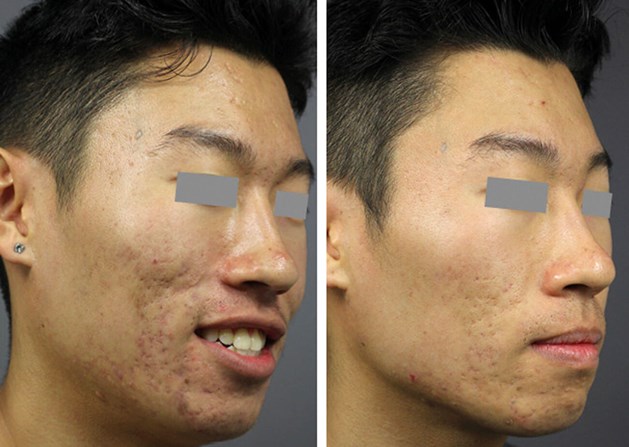Skin Rejuvenation Treatments: Renew Your Skin and Minimize Acne Scars
Skin Rejuvenation Treatments: Renew Your Skin and Minimize Acne Scars
Blog Article
Exploring Skin Problems: Treating and identifying Acne Scars for Healthier Skin
Acne scars represent a significant concern for people looking for to keep healthy and balanced skin, as they can affect both appearance and self-confidence. Understanding the various kinds of marks, from atrophic to hypertrophic, is necessary for figuring out proper therapy alternatives. While professional interventions like chemical peels and microneedling can be reliable, the importance of customized treatment strategies can not be overemphasized. Preventative actions play an essential role in reducing future scarring. As we check out these facets, one should take into consideration exactly how the best technique can bring about transformative outcomes.
Comprehending Acne Marks

The body's all-natural recovery process can lead to either atrophic scars, which show up as clinical depressions in the skin, or hypertrophic scars, which are raised and arise from overproduction of collagen. Furthermore, the psychological toll of acne scars should not be undervalued; many individuals report feelings of humiliation, anxiety, and reduced self-worth. This emotional concern can impact social interactions and general quality of life.
Resolving acne scars needs a thorough understanding of their development and impact. Recognition of the potential for lasting repercussions connected with neglected scars can motivate individuals to look for appropriate treatments. Early treatment and reliable monitoring strategies can substantially boost skin look and boost mental resilience, highlighting the importance of recognizing the intricacies surrounding acne scars.
Sorts Of Acne Scars
Acne marks can be classified into distinct types, each showing distinct characteristics and needing specific treatment methods. acne treatment for sensitive skin. The main sorts of acne marks consist of atrophic, hypertrophic, and keloid marks

Hypertrophic marks, in contrast, are increased over the skin degree and are the outcome of excessive collagen manufacturing throughout the healing process. They typically stay within the limits of the original acne sore. Keloid scars are similar yet extend past the original injury website, developing bigger, increased locations that can be itchy or unpleasant.
Recognizing these kinds of marks is essential for choosing suitable treatment alternatives. Different marks might react much better to certain treatments, such as laser treatments, fillers, or medical dig this interventions, stressing the relevance of a customized approach to acne scar monitoring.
Determining Your Scars
Acne marks typically fall right into two categories: hypertrophic and atrophic marks. These can further be classified right into ice-pick scars, boxcar marks, and rolling marks, each showing unique characteristics and needing different strategies for evaluation.
Hypertrophic marks, on the various other hand, are increased and occur because of extreme collagen manufacturing during the recovery process. Recognizing the specific attributes of your scars-- such as texture, depth, and size-- is vital for correct recognition (acne and acne scars treatment). In addition, think about the distribution of scars across your skin, as this can suggest the severity and duration of the acne problem
Involving with a skin doctor can offer valuable understandings right into the nature of your marks, aiding in the distinction in between different types. A comprehensive understanding of your marks will ultimately bring about a much more customized and reliable therapy plan, guaranteeing a clearer and healthier skin.
Therapy Alternatives Readily Available
Recognizing the details kind of acne scars present on your skin prepares for exploring efficient therapy alternatives. Typical sorts of acne scars consist of atrophic (depressed), hypertrophic (raised), and post-inflammatory erythema.
For atrophic marks, choices such as chemical peels, microneedling, and laser resurfacing are extensively made use of. Chemical peels utilize acids to eliminate the outer layer of skin, promoting new cell growth. Microneedling involves little needles that produce micro-injuries, boosting collagen production. Laser resurfacing targets harmed skin cells, improving appearance and tone.
Hypertrophic marks can be treated with corticosteroid injections to squash the scar or laser therapy to decrease soreness and improve look. Silicone gel sheets and pressure dressings may likewise assist in handling increased scars.
Additionally, dermal fillers can momentarily complete anxieties from atrophic marks, while surgical excision may be suitable for serious instances. Each treatment choice has its advantages and considerations, making it vital to consult with a skin doctor. They can give personalized recommendations based upon the type and intensity of your scars, along with your skin her explanation kind and overall wellness.
Tips for Avoidance
Reliable avoidance strategies can significantly decrease the possibility of creating acne scars. Utilizing non-comedogenic products assists prevent blocked pores, which can exacerbate acne.
Avoiding need to pick or pop acne lesions is essential, as this can bring about deeper skin damages and boost the danger of scarring. Instead, think about using a cool compress or non-prescription treatments to lower swelling and redness.
Sun security is an additional vital aspect of prevention; ultraviolet (UV) rays can dim scars and prevent the recovery process. Applying a broad-spectrum sunscreen with a minimum of SPF 30 daily can shield the skin and promote also healing.
Lastly, maintaining a well balanced diet rich in this page vitamins, minerals, and antioxidants sustains skin health and recovery. Remaining hydrated and managing stress and anxiety levels can likewise play a considerable role in minimizing acne flare-ups. By implementing these techniques, people can considerably minimize their possibilities of developing acne marks.
Verdict
Finally, understanding and identifying acne scars is crucial for reliable treatment and accomplishing healthier skin. Numerous sorts of acne scars, including hypertrophic and atrophic marks, require particular treatments tailored to specific needs. Therapy options array from chemical peels and microneedling to corticosteroid injections, stressing the value of speaking with a skin specialist. Additionally, embracing a mild skincare routine and safeguarding the skin from UV exposure can significantly add to the prevention of further scarring and total skin health.
The body's all-natural recovery procedure can result in either atrophic scars, which show up as clinical depressions in the skin, or hypertrophic scars, which are increased and result from overproduction of collagen. They are further divided right into three subtypes: ice choice scars, boxcar scars, and rolling scars. Acne scars typically drop into two groups: atrophic and hypertrophic marks. These can even more be identified into ice-pick scars, boxcar marks, and rolling scars, each showing distinctive features and calling for different approaches for evaluation.
Different kinds of acne marks, consisting of hypertrophic and atrophic scars, necessitate details treatments tailored to specific demands.
Report this page